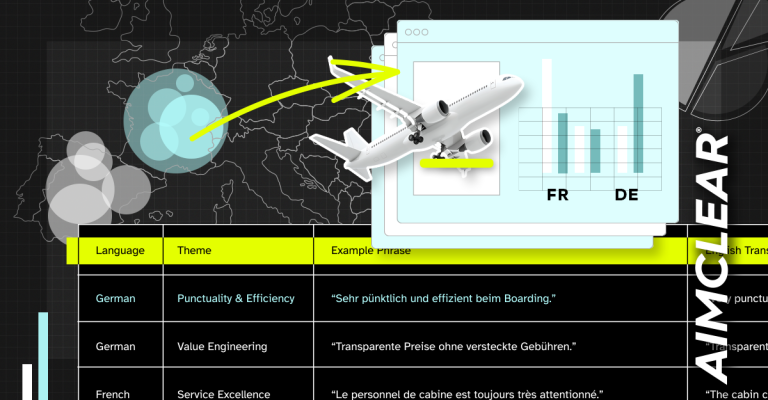
Socrates and his buddies were really on the ball– 2,500 years later, most (if not all) instances of personal and professional success really require you to “know thyself.” Understanding who you are and what value you provide to your target audience is a pivotal step towards mastering the market. However, this keen awareness must extend beyond just the individual. You must know your enemies— your competition– if you aim to surpass them in market share, among other business benchmarks.
No matter the vertical, competitive intelligence should be a key component in all search marketing plans. This can require you to be a bit of a spy, though does not necessarily translate to underhanded stratagem involving booby-traps or deceitful thievery. Online competitive intelligence can mean leveraging a variety of tools and tactics to help you better understand competitors’ strengths and prepare you to productively pounce on their weaknesses. Read on for a summary of tips & takeaways shared at SES San Fran by competitive intel’ pros Bill Leake, President and CEO, Apogee Search, Eli Goodman, Search Evangelist, comScore, Inc. and Mark Munroe, Director of Search Audience, MerchantCircle.
The Skinny on Competitive Intelligence
Competitive intelligence is the process of reviewing a range of business operations in a way that helps you and your company identify:
- who you’re competing against.
- what your competitors’ threat level is.
- what your strengths are.
- more about your potential weaknesses.
- how others perceive you in your market space.
- what factors are driving success in your market space.
- how to prioritize actions as you move forward.
Tools & Tactics- Stay abreast of competition by employing & monitoring a variety of site elements, including:
- website tracking tags
- reverse-engineering for landing pages and forms
- automated pricing comparison
- domain name ownership
- automated site change monitoring (like that offered by PolePositionWeb.com)
- basic human intelligence
You can also get the skinny on your competition by monitoring their community on Facebook, but don’t underestimate the insight provided by other social networks, such as LinkedIn— LinkedIn is a fantastic, free tool for tracking personnel changes within your competitors’ companies.
Mining Insight from the Search Funnel
There are many services you can use to assist you in search funnel (pre-click & post-click) metrics, ranging from free to top-shelf.
Free Competitive Search Tools: Search engines are free tools, and as such, can be your super BBFs.
- Google AdWords Keyword Tool
Yahoo Search Marketing- Microsoft AdCenter
Advantages – free; great for keyword discovery; helpful for sizing out the search marketing place; allow you to identify who’s in your competitive space.
Drawbacks – the data returned is limited to each engine; can’t really get client data; metrics focus on pre-click data, very early-on in the funnel.
Moving down the funnel, there are other tools that provide insight beyond the SERPs– tools you can use to benchmark your site vs. your competition.
Paid Competitive Search Tools: You’ll shell out some cash, but reap arguably sweeter benefits.
AdGooroo- Spyfu
- The Search Monitor
- Conductor
CovarioRank Above
Advantages – rich analytics regarding your site; deep analytics on your competition; insight on your competitors’ page rank, position rank, copy, CPC.
Drawbacks – tools can be expensive; the SERP positioning provided is helpful, but you can’t know what works for competition; no click-through data.
Evolving Priorities of Competitive Intel’
The old competitive intelligence Holy Grail = search click-through data.
Vendors
comScoreHitwise- Trellian
Advantages – data reveals what’s working for competition– not just what they bid on, but what drives traffic to their site; data includes robust metrics, including paid & organic click analysis.
Drawbacks – fee-based; few vendors to choose from; syndicated offerings don’t include conversion data.
The new competitive intelligence Holy Grail = custom-based project requirements.
Vendors
comScoreHitwiseCompete
Advantages – data geared towards analyzing conversions, follows search terms and aims to maximize monetary investments.
Drawbacks – very expensive, very limited vendor set, sample size can be an issue.
When it comes down to it, different events require different tools. Still, the basic relationship seems to be the more robust the competitive intelligence tools, the more money marketers should expect to pay.
Leveraging Third Party Link Analysis Tools
In-depth link analysis is a crucial tactic for matching or surpassing competition; fortunately, there are a variety of tools you can leverage for competitive link analysis. While on-page strategies are out in the open, off-page strategies are not as transparent- leveraging third-party link analysis tools are often a great way to gain comprehensive insight into your competition, including the level of difficulty you might face in attaining ranking for specific keywords, and specific linking programs that work for your competitors.
Link Analysis Tools
- LinkScape
Open Site Explorer
These services aggregate huge data sets; though they’re not exhaustive, the data crawled grows over time. Similar analysis tools, such as the Google Toolbar, are convenient but not without hangups. The data collected by Google’s Toolbar is like a snapshot of time and therefore, insufficient for true comparison. (Not to mention Pagerank is based on a page rather than an entire site). If up-to-date, discrete domain level analysis is what you’re after, third party tools are your best bet.
Dominate Rankings For Your Coveted Keyword
Close your eyes. Imagine your boss bursting into your office, shouting, “Why don’t we dominate the SERPs for [coveted keyword]?! If [competitor company] is #1, we can be, too! Make it happen!” This isn’t the easiest task to tackle, but here’s a useful strategy to help get things started:
Competitive Analysis on Targeted Phrase
- Build out a spreadsheet of the top 10-20 sites that rank for your coveted keyword.
- Include their Google Toolbar homepage PageRank, number of external links ranking, anchor text assessment, moz Rank and other valuable data.
- Export list of external sites linking to your competitors into an Excel doc.
- Sort by juice passed, look at strongest links.
- Identify linking strategies (badges, mentions, widgets, press release distribution, business development, etc).
- Update your own strategy accordingly.
Keep in mind, not everything that works for your competitors will work for you. Sites that rank for targeted phrases most likely have one of the following:
- A high PageRank homepage that is on topic with optimization for the keyword, or…
- A mid-level PageRank page with some external linking and some on-page optimization.
Conclusion: ranking is a trade-off between page relevance and page strength. Fairly competitive terms can rank with relevant pages.
Lessons Learned:
- Good links dominate any site’s overall link strength.
- Even very strong sites gain a large % of their strength from small % of links.
- Strong links you have need to be protected.
Thanks to the panel at SES for their terrific insight!








